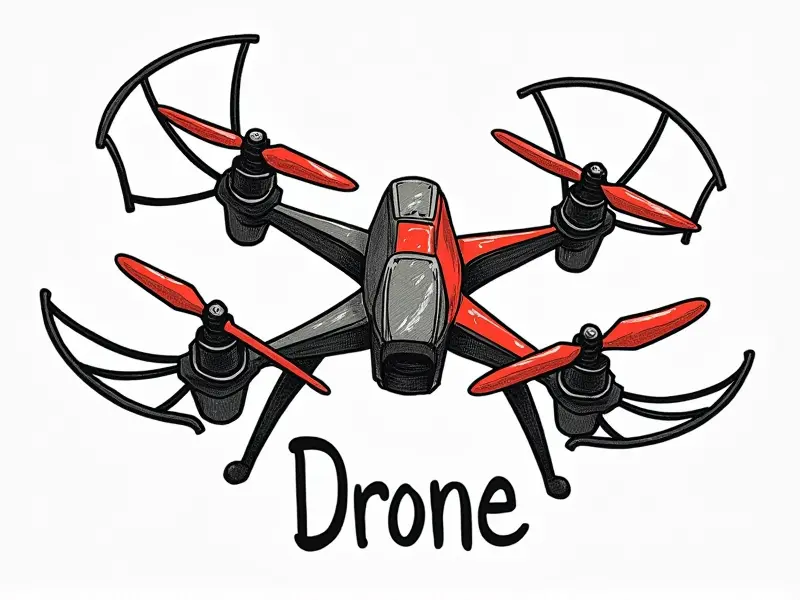How to tune a PIDS controller?

Mastering PID Tuning in Drones
PID tuning is a critical aspect of drone performance optimization, particularly for FPV racing drones where quick and precise control is paramount. Properly tuned PIDS (Proportional-Integral-Derivative with Stability) controllers ensure that your drone maintains stability during flight while responding efficiently to pilot inputs. This article will guide you through the process of tuning a PID controller in your drone.
Quick Guide to PID Controller Tuning
Tuning a PID controller is essential for achieving optimal performance from your drone. Here’s a quick overview of what you need to know:
- Proportional (P): Adjusts the system based on the current error value.
- Integral (I): Accumulates past errors over time to eliminate steady-state error.
- Derivative (D): Predicts future errors by considering the rate of change of the error.
Step-by-Step PID Tuning Tutorial
Follow these steps to tune your drone's PIDS controller:
- Start with a Baseline Setting: Begin by setting all parameters to their default values or a known good starting point.
- Adjust Proportional Gain (P): Increase the proportional gain until you notice oscillations. Then reduce it slightly for stability.
- Tune Integral Gain (I): Gradually increase the integral gain to eliminate steady-state error without causing excessive overshoot.
- Optimize Derivative Gain (D): Adjust the derivative gain to dampen oscillations and improve response time.
PID Control: The Ultimate Setup Guide
Setting up a PID controller properly involves understanding its parameters:
- Kp (Proportional Gain): Controls how aggressively the system responds to current errors.
- Ki (Integral Gain): Helps eliminate steady-state error by integrating past errors over time.
- Kd (Derivative Gain): Predicts future errors and helps stabilize the system.
Optimize Your Drone with PID Tuning
Proper PID tuning can significantly enhance your drone's performance:
- Better Stability: Ensures that your drone remains stable during flight, even in windy conditions.
- Faster Response Time: Improves the drone’s responsiveness to pilot inputs for smoother control.
- Reduced Oscillations: Minimizes unwanted oscillations and vibrations, leading to more precise flight.
Fine-Tuning PIDS for Smooth Flight
To achieve smooth and stable flights, focus on fine-tuning the PID parameters:
- Kp: Start with a low value and gradually increase until you see oscillations. Then reduce it slightly.
- Ki: Add small increments to eliminate steady-state error without causing instability.
- Kd: Adjust this parameter to dampen overshoots and improve overall stability.
PID Parameters Explained and Tuned
Understanding the role of each PID parameter is crucial for effective tuning:
- Kp (Proportional Gain): Controls how quickly the system responds to errors. Higher values lead to faster response but can cause instability.
- Ki (Integral Gain): Helps eliminate steady-state error by integrating past errors over time, ensuring long-term stability.
- Kd (Derivative Gain): Predicts future errors based on the rate of change, helping to stabilize the system and reduce overshoot.
Fast Track PID Controller Optimization
For those looking for quick results, follow these tips:
- Start with a Basic Setup: Begin by setting all parameters to their default values or a known good starting point.
- Tune in Increments: Make small adjustments and test the drone's performance after each change.
- Focus on Stability First: Prioritize stability over speed, as instability can negate any gains from increased responsiveness.
PID Tuning Tips for FPV Racing Drones
FPV racing drones require precise and responsive control:
- High Kp: Use higher proportional gain to ensure quick response times, which is crucial in fast-paced racing.
- Moderate Ki: Opt for moderate integral gain to eliminate steady-state error without causing instability during high-speed maneuvers.
- Suitable Kd: Adjust the derivative gain carefully to dampen oscillations and improve overall stability, ensuring smooth flight paths.
Achieving Perfect PID Balance Quickly
To achieve a perfect balance quickly, follow these steps:
- Start with a Baseline: Begin with default or known good settings as your starting point.
- Tune in Small Increments: Make small adjustments to each parameter and test the drone's performance after each change.
- Prioritize Stability: Ensure that your drone remains stable during flight before focusing on speed or responsiveness.
Simplified PID Tuning for Beginners
If you're new to PID tuning, start with these simplified steps:
- Understand the Basics: Learn about the roles of Kp, Ki, and Kd in controlling your drone.
- Start Simple: Begin by setting all parameters to their default values or a known good starting point.
- Tune Gradually: Make small adjustments and test after each change until you find the optimal settings for your drone.
Conclusion
Mastery of PID tuning is essential for optimizing your drone's performance, ensuring stability, responsiveness, and smooth flight. By following these guidelines and tips, you can achieve a finely tuned PIDS controller that enhances your flying experience significantly. Whether you're an FPV racer or just looking to improve the stability of your quadcopter, proper PID tuning will make all the difference in achieving peak performance.

